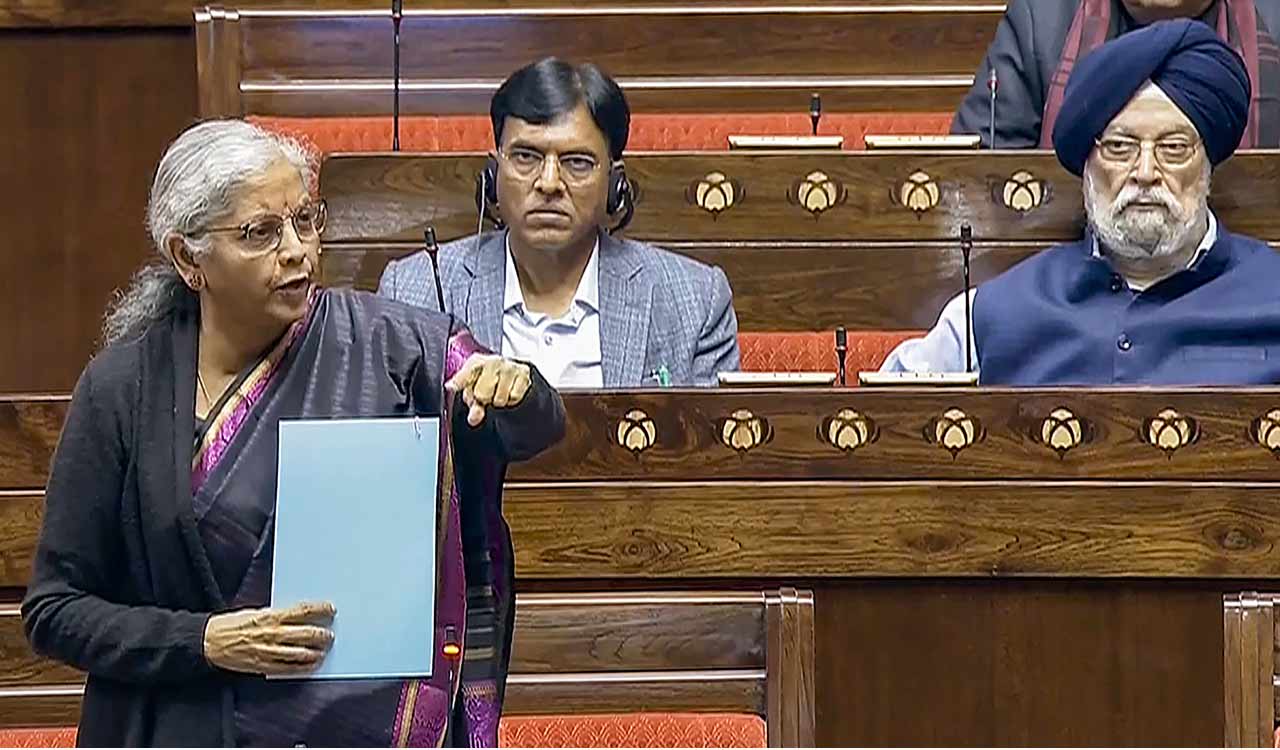By selective presentation of figures, Sitharaman made a clumsy effort to paint a picture of contrast between UPA and NDA regimes
Published Date – 13 February 2024, 11:45 PM

Union Finance Minister Nirmala Sitharaman speaks in the Rajya Sabha during the Budget session of Parliament, in New Delhi, Saturday, Feb. 10, 2024. (PTI Photo)
As the election season approaches, any issue concerning the nation has the potential to acquire political overtones. Management of the economy is no exception. No wonder that the ‘white paper’, presented by union Finance Minister Nirmala Sitharaman in Parliament recently, came across as an exercise in hyperbolic political messaging; an attempt to show the previous Congress-led UPA government in poor light and paint a rosy picture of the performance of the NDA government in the last ten years. At best, it was a political rant designed to peddle a narrative suitable to the present dispensation ahead of the general elections. By selective presentation of official figures, the Finance Minister made a clumsy effort to paint a picture of contrast between the UPA and NDA regimes — the former allegedly characterised by widespread corruption, poor fiscal management and policy paralysis while the latter marked by robust performance and transformative reforms to set the economy on a recovery and growth path. It is nobody’s case that everything was hunky-dory during 2004-2014 when the UPA was in power. The Congress-led coalition government did falter in managing the economy. So did the NDA, with the spectacular failure of demonetisation and hasty roll-out of the Goods and Services Tax (GST) being the two glaring examples. But to say that the UPA’s time in office was a dark chapter in the country’s history is unfair and reflects political malice. Moreover, Sitharaman conveniently side-stepped the key issues facing the nation like shrinking jobs and wages.
One could argue endlessly about the comparative report cards of the two regimes in terms of GDP growth rates and the methodologies used but the launch of the Mahatma Gandhi National Rural Employment Guarantee Act (MNAREGA) by the UPA government served as the biggest economic shock absorber for the rural poor in India’s history. The Right to Information Act, Forest Rights Act, Indo-US nuclear deal and Aadhaar as a national citizen identity card project were some of the notable initiatives during the period that was also, ironically, marked by a string of corruption scandals, policy compromises due to pulls and pressures of coalition politics and mounting bad loans following reckless lending by banks. It was also true that Pranab Mukherjee, as Finance Minister, kept the fiscal deficit elevated longer than required and stoked inflation, while his cabinet colleagues AK Antony and Jairam Ramesh faced flak for sitting over project proposals in Defence and Environment ministries respectively, leading to allegations of policy paralysis. On its part, the NDA government has, in the last ten years, ushered in economic reforms such as the Insolvency and Bankruptcy Code and GST and utilised the JAM platform (Jan Dhan, Aadhaar and Mobile) to deliver services more efficiently, leading to less leakages from the system. However, the white paper is silent on critical issues like inflation and growing economic disparities.




